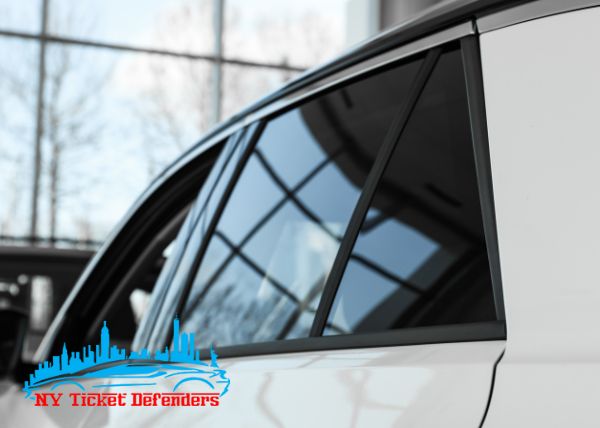Why Vehicle Window Tinting is a Must-Have for Modern Cars
Why Vehicle Window Tinting is a Must-Have for Modern Cars
Blog Article
Home Window Tinting Laws and Guidelines: What You Required to Know Before Tinting Your Automobile
Before proceeding with home window tinting for your lorry, it is crucial to familiarize on your own with the varied legislations and standards that control this practice across different states. These regulations dictate the permissible degrees of color darkness, frequently gauged by visible light transmission (VLT) portions, and consist of particular specifications for front windscreens intended at ensuring roadway safety and security.
Overview of Window Tinting Regulations
Window tinting regulations are frequently subject to variant throughout various territories, showing local guidelines and safety and security factors to consider. These regulations determine the permissible degrees of tint darkness and reflectiveness on vehicle home windows, making certain that drivers keep ample presence while also shielding versus hazardous UV rays and heat.
Most regulations categorize window tinting based on the Visible Light Transmission (VLT) percentage, which shows the quantity of light that can travel through the window. Normally, reduced VLT percents signify darker tints. Legislations often set apart between the front, side, and rear home windows, with stricter constraints applied to the front windshield to enhance safety for both the motorist and various other roadway users.
Additionally, some jurisdictions enforce restrictions on the reflectivity of the tint, stopping too much glow that could harm presence. Exceptions to these legislations may exist for people with particular medical problems requiring added sun protection. Compliance with window tinting regulations is essential, as infractions can result in penalties, required elimination of the color, and potential rises in insurance premiums. Therefore, it is vital for automobile proprietors to acquaint themselves with neighborhood legislations prior to waging window tinting setups.
State-by-State Color Laws
Recognizing the certain home window tinting regulations in each state is crucial for vehicle owners seeking to follow the regulation. Each state in the U.S. has established its very own collection of guidelines regulating home window tinting, which can vary significantly. These policies typically determine the allowable levels of color darkness, the kinds of windows that can be tinted, and any medical exemptions that may apply.
For example, states like California have rigorous restrictions on color darkness for front home windows, while others, such as New Mexico, might permit darker colors. Furthermore, certain states mandate specific presence percentages for various home windows, consisting of the windshield, front side home windows, and rear windows. It is vital for vehicle owners to familiarize themselves with their state's regulations to prevent possible fines or fines.
In addition, some states might call for a certification sticker label to be placed on colored windows, indicating conformity with state legislations. Failure to stick to these regulations not only runs the risk of lawful effects yet can additionally impact safety and exposure while driving. Consequently, automobile owners ought to carry out detailed research or seek advice from regional authorities to ensure complete understanding and conformity with state-by-state tint laws.
Allowed Color Types and levels
Lots of vehicle proprietors might be surprised to discover that permitted color levels and types differ commonly throughout different states. Each state has actually established its own regulations concerning the permitted darkness and reflectivity of home window tint, typically determined by Visible Light Transmission (VLT) percentages. VLT refers to the amount of light that can pass through the tinted home windows; therefore, a lower portion shows a darker tint.
Moreover, the sorts of color materials allowed can differ, with some states forbiding metal or mirror-like coatings. It is essential for vehicle owners to familiarize themselves with their state's specific laws to make certain compliance. Non-compliance can result in penalties, compulsory removal of the color, or various other legal effects, making it essential to understand these regulations before proceeding with installation.
Medical Exemptions for Tinting
While not all states give allowances for medical exemptions relating to window tinting, those that do acknowledge the need for certain people to enhance visibility and convenience because of clinical conditions. Different clinical conditions, such check this site out as lupus, skin cancer, and particular eye problems, can make individuals especially delicate to sunshine. Consequently, these people might need darker tints to protect themselves from damaging UV rays and glare.

It is necessary to note that even with a medical exemption, there may still be restrictions on the degree of color permitted. pop over to this web-site Conformity with state laws makes sure that people are both safeguarded and within lawful limitations. Those considering medical exemptions ought to call their regional Division of Motor Autos or comparable authority to recognize the treatments and requirements necessary to obtain an exception successfully.
Fines for Non-Compliance
Stopping working to adhere to window tinting regulations can lead to considerable charges, which vary by state. Regulation enforcement firms are empowered to provide citations for vehicles that do not comply with the specified tinting laws. These charges typically include penalties, which can range from moderate total up to a number of hundred bucks, depending on the intensity of the violation and the state concerned.
In some jurisdictions, repeated offenses may cause rising penalties or added charges, such as required court looks. Furthermore, non-compliance may necessitate the removal of unlawful tinting, often at the proprietor's cost. In extreme situations, regular wrongdoers may face suspension of their lorry registration until compliance is accomplished.
Furthermore, insurance policy effects might occur from obtaining numerous citations for home window color infractions. Insurance firms may view such violations as an indication of riskier habits, potentially leading to increased premiums or difficulty in protection.
To avoid these penalties, it is critical for automobile proprietors to familiarize themselves with their neighborhood home window tinting regulations and ensure that their automobile complies (Window Tinting). This proactive technique not only stays clear of legal ramifications but also advertises roadway safety and security
Final Thought

Most policies categorize window tinting based on the Visible Light Transmission (VLT) portion, which suggests the amount of light that can pass with the home window. Conformity with home window tinting regulations is critical, as infractions can result in penalties, obligatory removal of the color, and possible boosts in insurance policy premiums.Understanding the specific window tinting guidelines in each state is vital for vehicle owners seeking to abide with the law. These guidelines typically dictate the allowed degrees of color darkness, the kinds of windows that can be tinted, and any type of medical exceptions that might apply.
For instance, states like California have strict limitations on tint darkness for front windows, while others, such as New Mexico, may permit darker colors.
Report this page